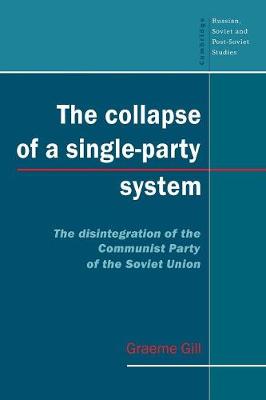Cambridge Russian, Soviet and Post-Soviet Studies
2 total works
In this 1994 book Graeme Gill traces the disintegration of the Communist Party of the Soviet Union from 1985 until the dissolution of the USSR in December 1991. Based principally on the contemporary Soviet press, the book to follows the debates in the party over the implications of Gorbachev's reforms and how the party should respond to them. It is an in-depth analysis of the institutional dynamics of a party under pressure. When it came under challenge and it could no longer use the weapon of suppression, the party was unable to mount a serious defence of its position and role. Confronted from the top by Gorbachev's call to reform itself and by his changes to the political arena, and from the bottom by new political forces taking advantage of that arena, the party's unity collapsed and with it any sense of purpose or possibility of survival.
The Origins of the Stalinist Political System offers new and challenging perspectives on Soviet political development from October 1917 until the outbreak of war in June 1941. Explanations of the emergence of a Stalinist political system have hitherto concentrated upon either impersonal factors, such as economic backwardness and the process of bureaucratisation, or Stalin the political actor and the intricacies of elite conflict. Graeme Gill examines the relationship between institutional structures and the conventions, which are created to shape the activities of individuals and considers centre/periphery relations. He divides this period into four sequential but distinct political systems and examines how the patterns of these relationships shaped the course of development to 1941. This book incorporates a great deal of new material. It will become essential reading for specialists in, and students of Soviet history with special reference to politics under Stalin, the 1920s and the 1930s.

